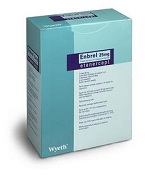It's no secret that drug spending is on the upswing. But don't expect the trend to die down anytime soon, Express Scripts ($ESRX) said. The PBM giant expects total drug spending to shoot up over the next two years, with specialty meds driving double-digit spending increases further down the road.
Total drug spending will grow between 6% and 8% between 2016 and 2018. Spending for specialty meds, including those for inflammatory conditions and cancer, will jump 17% annually over the next three years, Express Scripts said in its report.
The driving force behind the trend is the uptick in specialty meds. Specialty drugs are only used by one to two percent of the population, but they still accounted for 37% of drug spend in 2015, Express Scripts said in its report.
Spending on specialty drugs increased 17.8% last year, and the pattern will continue. Express Scripts figures that the meds will account for half of all drug spend in 2018, with therapies for inflammatory diseases and cancer fueling the increases. Altogether, drugs for inflammatory conditions, MS and oncology make up more than half, or 56.3%, of U.S. drug outlays, according to the report.

AbbVie's ($ABBV) RA drug Humira Pen and Amgen's ($AMGN) RA powerhouse Enbrel "contributed significantly" to the 25% spending leaps for inflammatory meds in 2015, Express Scripts said. Both drugs' unit costs jumped by more than 17% last year.
But cancer drugs also contributed to the trend. Novartis' ($NVS) cancer med Gleevec's price shot up 19% last year, just ahead of its patent expiration month, Express Scripts points out. The hike contributed to an almost 24% jump in spending for oncology meds in 2015.
Pricey hep C drugs also played a big role in spending, Express Scripts said in its report. The meds are the reason why drug spending increased more in 2014 than it had in a decade. But moves from companies including Express Scripts to undercut those numbers through pricing wars seem to have paid off. Last year, payers lowered the cost of therapy by half to save $1 billion in costs, Express Scripts says.
Among non-specialty meds, diabetes drugs fueled spending increases. The category showed a 14% increase in spending in 2015, even though Sanofi's ($SNY) Lantus, the PBM's preferred treatment, charted a 13.7% decrease in unit cost. Prefilled insulin pens and newer, more expensive diabetes therapies contributed to the uptick in spending.
Even though more increases in drug spending are on the horizon, Express Scripts has a few ideas for how to bring down costs. Payers should "tap into the potential $39.7 billion in savings from biosimilars" over the next 5 years," the PBM said. Biosimilars for two of the top-selling inflammatory drugs, Johnson & Johnson's ($JNJ) Remicade and AbbVie's Humira, are getting closer to approval and could hit the market by 2017, according to the report.
Meanwhile, expanding indication-based reimbursement to expensive categories could rein in spending. Last year, Express Scripts said that it would roll out a new value-based reimbursement model that uses comparative data and indication-specific pricing to find "clinically superior" meds. The PBM will try this approach for cancer first and then anti-inflammatory drugs.
- read the report (PDF)
Special Reports: Top 10 most expensive drugs of 2013 |Top 10 best-selling cancer drugs of 2013